
Britannica Learning Library 002 - Planet Earth
.pdf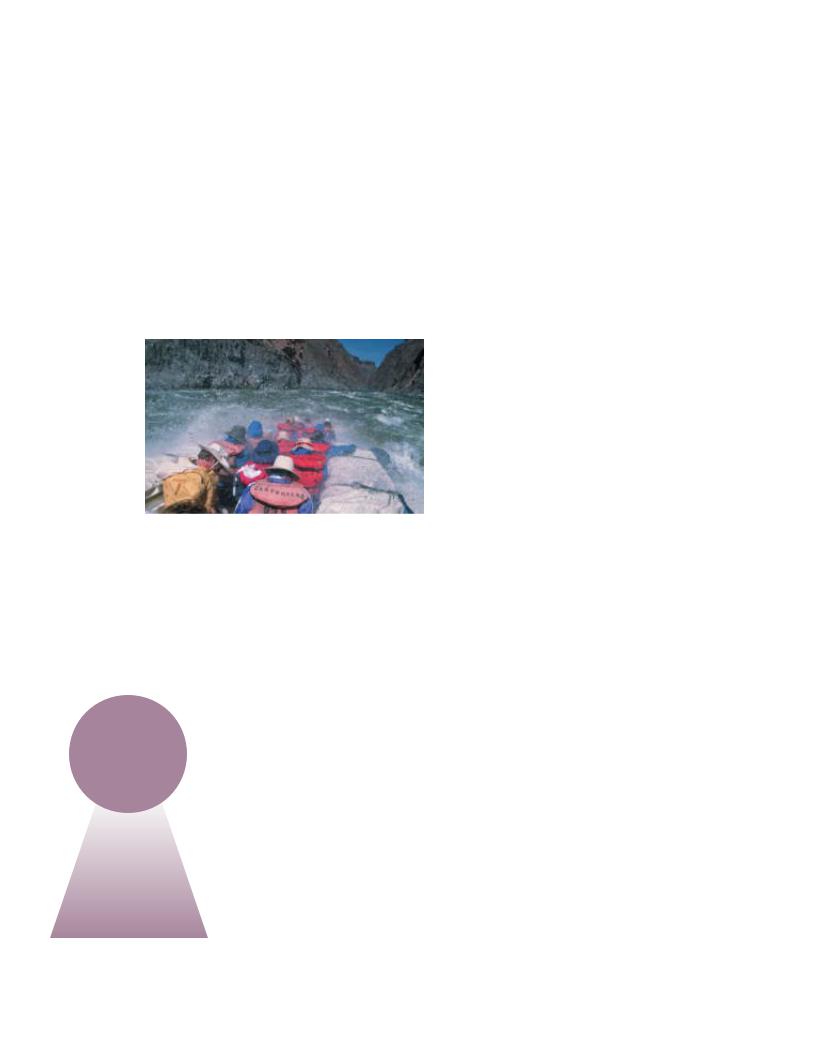
|
|
|
|
|
|
|
|
|
pi |
|
|
|
|
|
|
|
|
|
|
|
e |
|
|
|
|
|
|
|
|
r |
c |
|
|
|
|
|
|
|
|
|
e |
||
|
|
|
|
|
|
|
e |
|
||
|
|
|
|
|
|
t |
|
|
|
|
|
|
|
|
|
s |
|
|
|
|
|
|
|
|
|
a |
|
|
|
|
|
|
|
|
|
M |
|
|
|
|
|
|
|
|
|
s |
|
|
|
|
|
|
|
|
|
|
’ |
|
|
|
|
|
|
|
|
|
e |
|
|
|
|
|
|
|
|
|
r |
|
|
|
|
|
|
|
|
|
|
Natu |
|
|
|
|
|
|
|
|
|
|
E S
Acanyon is a deep steep-walled valley cut through rock by a river. The word “canyon” comes from the Spanish word cañón, which means “tube.” Such valleys are found where river currents are strong and swift. A smaller valley cut out in the same way is called a “gorge.”
The Grand Canyon, in
|
|
|
|
|
northern Arizona in the United |
|
|
|
|
|
States, is the most beautiful and |
|
|
|
|
|
awesome canyon in the world. It |
|
|
|
|
|
is cut a mile deep into the earth |
|
|
|
|
|
and is known for its fantastic |
|
|
|
|
|
shapes and colors. Swiftly |
|
|
|
|
|
flowing water, sand, gravel, and |
|
|
|
|
|
mud gave the rocks their |
|
|
|
Rafting through the Grand Canyon on the Colorado River. |
interesting shapes. Each of its |
|
|
|
|
© Kevin Fleming/Corbis |
rock layers has a different shade |
|
|
|
|
|
|
|
|
|
|
of color, including buff, gray, green, pink, brown, and violet. |
||
|
|
|
|
The canyon is 277 miles long and has been carved through the Arizona |
|
|
|
|
landscape by the Colorado River. It stretches in a zigzag course from the |
||
|
|
|
northern end of Arizona to the Grand Wash Cliffs near Nevada. |
||
|
|
|
|
Many ancient pueblos—Native American cliffside dwellings—and |
|
|
|
|
other ruins in the canyon show that prehistoric peoples lived there. The |
||
|
|
|
Grand Canyon was first discovered by Europeans in 1540. It was |
||
|
|
H |
|
established as a national park in 1919. |
|
|
|
|
|
|
|
|
C |
L |
|
|
|
R |
|
|
|
||
|
I |
Visitors to the park can take a mule-pack trip down to the |
|||
A |
|
|
G |
||
|
|
H |
|
||
|
|
|
T bottom of the canyon. People can even go river rafting, taking a |
||
|
|
|
|||
thrilling trip over the rapids.
If you visit the canyon, you’ll probably see some of the many animals that live there. Squirrels, coyotes, foxes, deer, badgers, bobcats, rabbits, chipmunks, and kangaroo rats all make their homes
near the canyon.
In 1979 the Grand Canyon was named a World Heritage site.
LEARN MORE! READ THESE ARTICLES…
CAVES • GEOGRAPHY • RIVERS
40
© 2008 Encyclopædia Britannica, Inc.
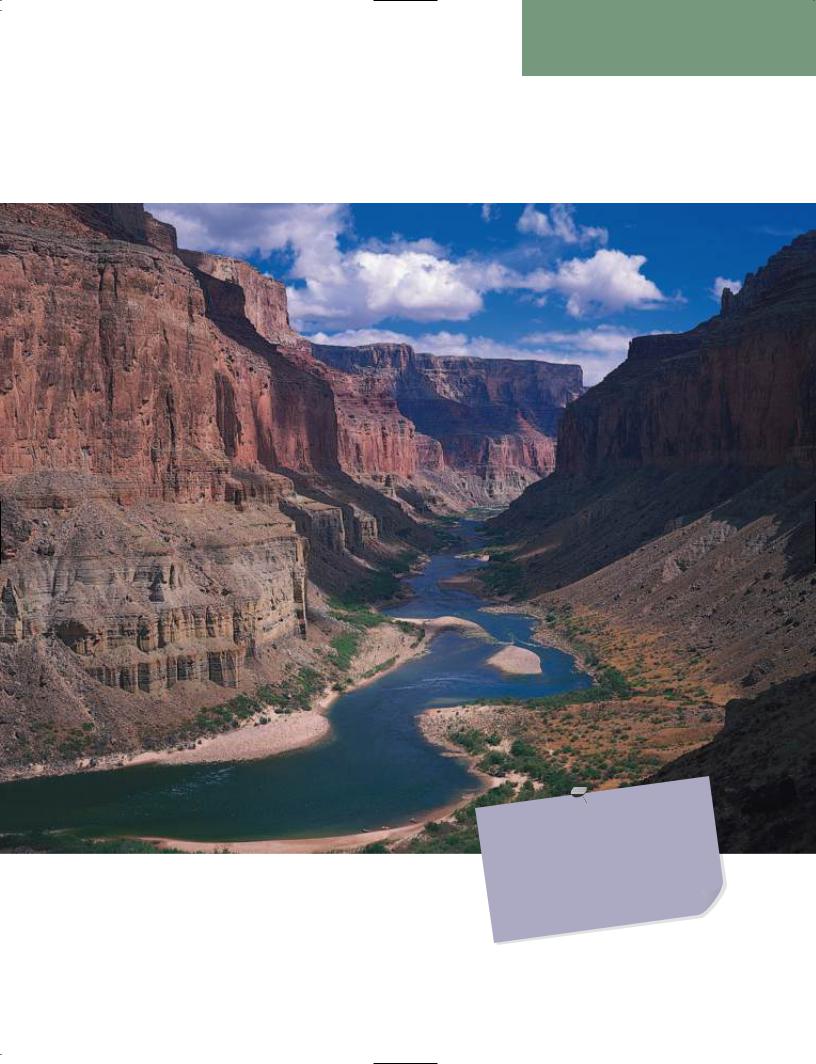
G R A N D C A N Y O N
The Colorado River, seen here in the Marble Canyon portion of the Grand Canyon, cut the whole canyon— over millions of years.
Gary Ladd
DID |
YOU |
KNOW? |
|
Canyon |
|||||||||||||
|
|
|
the |
Grand |
|||||||||||||
|
|
|
terms |
|
|
||||||||||||
In geologic |
|
6 million |
|||||||||||||||
|
|
|
at about |
||||||||||||||
|
|
|
young, |
|
|
cuts |
|||||||||||
is fairly |
|
|
rocks it |
||||||||||||||
. But the |
|
|
billion |
||||||||||||||
|
|
|
|
|
|
|
|
as 2 |
|||||||||
years |
old |
|
|
back |
as far |
|
|||||||||||
through date |
|
|
|
. |
|
|
|
|
|||||||||
|
|
|
|
|
|
|
|
|
|
|
|||||||
to 2.5 |
billion |
years |
ago |
|
|
|
|
||||||||||
|
|
|
|
|
|
|
|||||||||||
|
|
|
|
|
|
|
|
|
|
|
|
||||||
|
|
|
|
|
|
|
|
|
|
|
|
|
|
|
|||
|
|
|
|
|
|
for”.“tube |
|||
© 2008 Encyclopædia Britannica, Inc. |
Answer:Theword“canyon”comesfromtheSpanishword |
|||
|
|
|
|
|
|
|
|
|
|
41
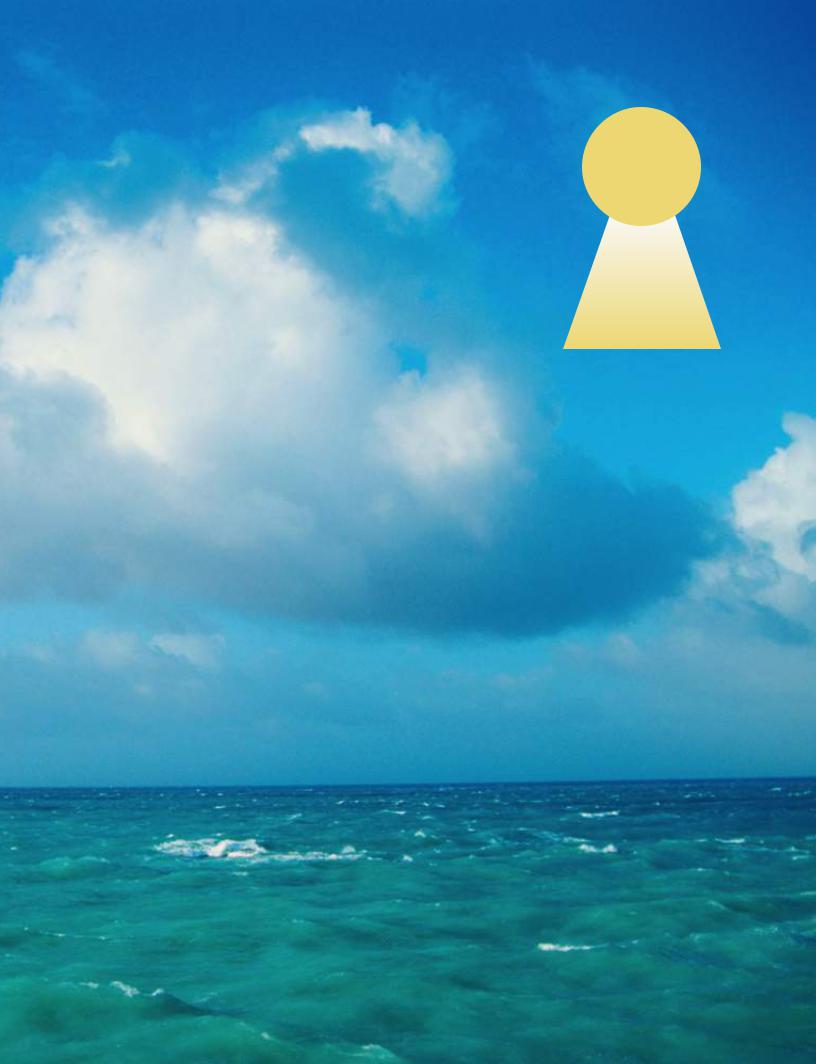
E S
|
H |
|
|
|
C |
L |
|
R |
|||
I |
|||
A |
|
H |
|
|
|
G |
|
|
|||
|
|
T |
|
How does the ocean help plants to grow?
© 2008 Encyclopædia Britannica, Inc.
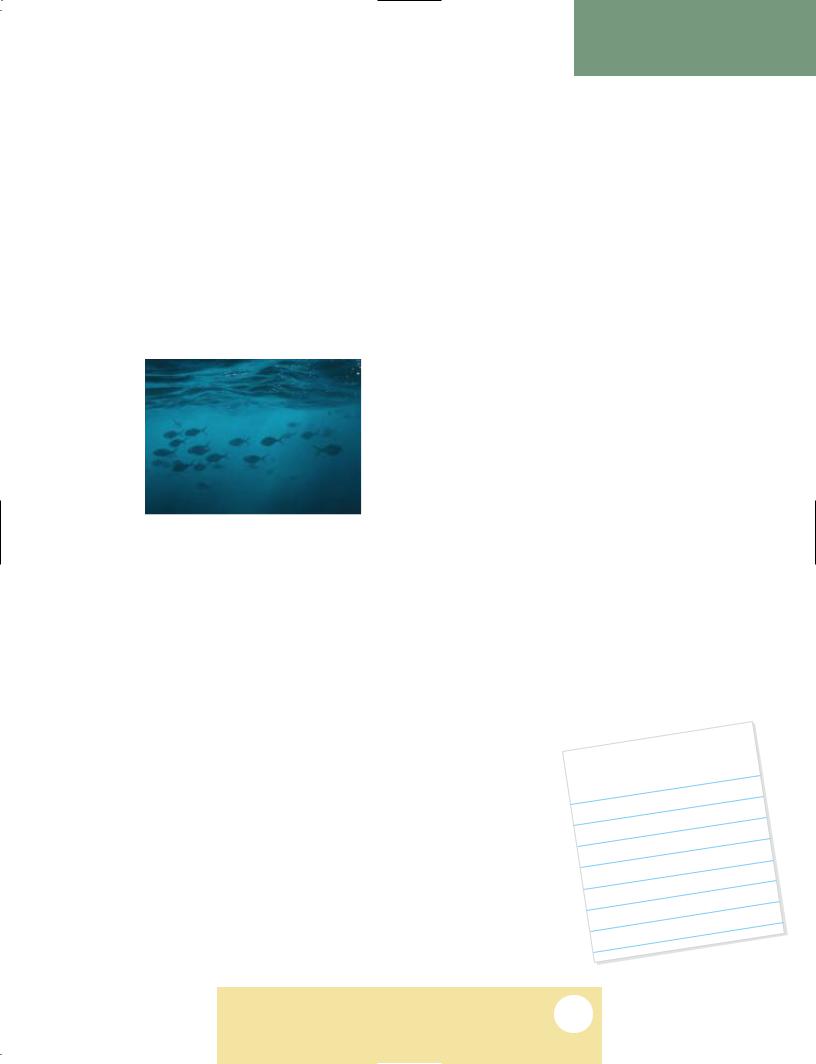
O C E A N S
|
e |
h |
|
T |
|
Worl
d
of
Water
Did you know that nearly three-fourths of the Earth’s surface |
|
|
|
|
|
|
|
|
|
|
|
|
|
|
|
|
|
|
|
|||
is underwater? And almost all of that water is in one of the four major |
|
|
|
|
|
|
|
|
|
|
|
|
|
|
|
|||||||
oceans. From biggest to smallest the oceans are: the Pacific, the Atlantic, |
|
|
|
|
|
|
|
|
|
|
|
|
|
|||||||||
the Indian, and the Arctic. Seas, such as the Mediterranean and the |
|
|
|
|
|
|
|
|
|
|
|
|
|
|
|
|
|
|||||
Caribbean, are divisions of the oceans. |
|
|
|
|
|
|
|
|
|
|
|
|
|
|
|
|
|
|
|
|
|
|
|
The oceans are in constant motion. |
|
|
|
|
|
|
|
|
|
|
|
|
|
|
|||||||
|
The gravity of the Moon and the Sun |
|
|
|
|
|
|
|
|
|
|
|
|
|
|
|
||||||
|
pulls on the oceans, causing tides—the |
|
|
|
|
|
|
|
|
|
|
|
|
|
|
|||||||
|
regular rising and falling of the ocean |
|
|
|
|
|
|
|
|
|
|
|
|
|
|
|
||||||
|
along beaches and coastlines. The Earth’s |
|
|
|
|
|
|
|
|
|
|
|
|
|||||||||
|
rotation makes the oceans circulate |
|
|
|
|
|
|
|
|
|
|
|
|
|
|
|
|
|||||
|
clockwise in the Northern Hemisphere |
|
|
|
|
|
|
|
|
|
|
|
|
|
||||||||
|
and counterclockwise in the Southern |
|
|
|
|
|
|
|
|
|
|
|
|
|
|
|||||||
© Kennan Ward/Corbis |
Hemisphere. And winds cause waves to |
|
|
|
|
|
|
|
|
|
|
|
|
|
||||||||
ripple across the ocean surface, as well as helping currents to flow |
|
|
|
|
|
|
|
|
|
|
|
|
|
|
|
|
|
|
||||
underneath. |
|
|
|
|
|
|
|
|
|
|
|
|
|
|
|
|
|
|
|
|
|
|
Currents are like rivers within the ocean. Some are warm-water |
|
|
|
|
|
|
|
|
|
|
|
|
|
|
|
|
|
|||||
currents, which can affect temperatures on land, and some are cold-water |
|
|
|
|
|
|
|
|
|
|
|
|
|
|||||||||
currents, which generally flow deeper. Major ocean currents, such as the |
|
|
|
|
|
|
|
|
|
|
|
|
|
|||||||||
Gulf Stream off the North American coast, also make for faster ocean travel. |
|
|
|
|
|
|
|
|
|
|
|
|||||||||||
We know less about the oceans than we do about the Moon. The ocean |
|
|
|
|
|
|
|
|
|
|
|
|||||||||||
depths hide dramatic deep trenches and enormous mountain ranges. The |
|
|
|
|
|
|
|
|
|
|
|
|
|
|||||||||
Mid-Atlantic Ridge extends for about 10,000 miles. It follows a curving |
|
|
|
|
|
|
|
|
|
|
|
|
|
|||||||||
path from the Arctic Ocean to the southern tip of Africa. |
|
|
|
|
|
|
|
|
|
|
|
|
|
|
|
|
|
|
|
|
|
|
Oceans affect our lives in important ways. They |
|
|
|
|
|
|
|
|
KNOW? |
|
|
|||||||||||
provide fish to eat. They add moisture to the air to form |
|
DID |
YOU |
|
|
|||||||||||||||||
|
|
|
|
|
|
|
|
|
|
|
the |
|
||||||||||
clouds. And the clouds then make the rain that helps plants |
|
|
|
|
|
|
near |
|
||||||||||||||
|
|
|
|
Trench |
|
|||||||||||||||||
|
|
|
|
|
|
|
|
|||||||||||||||
|
|
Mariana |
|
|
|
|||||||||||||||||
The |
|
|
|
|
|
|
|
|||||||||||||||
grow. Some scientists are even working on affordable ways |
|
|
has |
the |
|
|
|
|
|
|||||||||||||
|
|
of Guam |
|
|
|
|
|
|||||||||||||||
|
|
|
|
|
|
|
|
|
||||||||||||||
|
island |
|
|
|
so far, |
|||||||||||||||||
to turn salt water into fresh water for drinking, cooking, |
|
|
|
|
|
|
|
|
|
|||||||||||||
|
|
|
spot |
measured |
||||||||||||||||||
|
|
|
|
|
|
|
|
|
|
|||||||||||||
washing, and watering crops. If they succeed, it will be one |
|
deepest |
|
|
|
|
||||||||||||||||
|
|
|
miles. |
The |
|
|||||||||||||||||
|
|
seven |
|
|||||||||||||||||||
|
|
|
|
|
|
|
||||||||||||||||
of the most important inventions of our time. |
|
|
at nearly |
|
|
|
|
|
|
|
|
|
|
|||||||||
|
|
|
|
|
|
mountain, |
|
|||||||||||||||
|
|
|
|
|
|
highest |
|
|||||||||||||||
|
|
|
|
world’s |
in |
|||||||||||||||||
|
|
|
|
|
could |
sink |
||||||||||||||||
|
LEARN MORE! READ THESE ARTICLES… |
|
|
|
|
|
|
|
|
|||||||||||||
|
|
|
|
|
|
|
Everest, |
|
||||||||||||||
|
|
|
Mount |
|
|
a mile |
||||||||||||||||
|
|
|
|
|
|
have |
||||||||||||||||
|
|
|
|
|
and |
still |
||||||||||||||||
ATLANTIC OCEAN • PACIFIC OCEAN • TIDES |
|
|
that spot |
|
|
|||||||||||||||||
|
|
|
|
|
|
|
|
|||||||||||||||
|
|
|
|
|
|
|
|
|
|
|
|
|||||||||||
|
|
|
|
|
|
|
it. |
|
|
|
|
|
|
|||||||||
© |
|
|
|
|
of water |
above |
|
|
|
|
|
|
||||||||||
Doug |
|
|
|
|
|
|
|
|
|
|
||||||||||||
|
|
|
|
|
|
|
|
|
|
|
|
|||||||||||
|
|
|
|
|
|
|
|
|
|
|
|
|
|
|
|
|
||||||
|
|
|
|
|
|
|
|
|
|
|
|
|
|
|
|
|
|
|
|
|
|
|
Wilson/Corbis |
moisture,itrains,whichhelpsplants.grow |
|
|
|
|
|
|
|
|
|
|
|
|
|
|
|
|
|
|
|
43 |
|
air,whichturnsinto.cloudsWhenthecloudsgatherenough |
|
|
|
|
|
|
|
|
|
|
|
|
|
|
|
|
|
|
||||
Answer:Oceanwaterhelpsplantsgrowbyaddingmoisturetothe |
|
|
|
|
|
|
|
|
|
|
|
|
|
|
|
|
|
|
|
|||
© 2008 Encyclopædia Britannica, Inc.
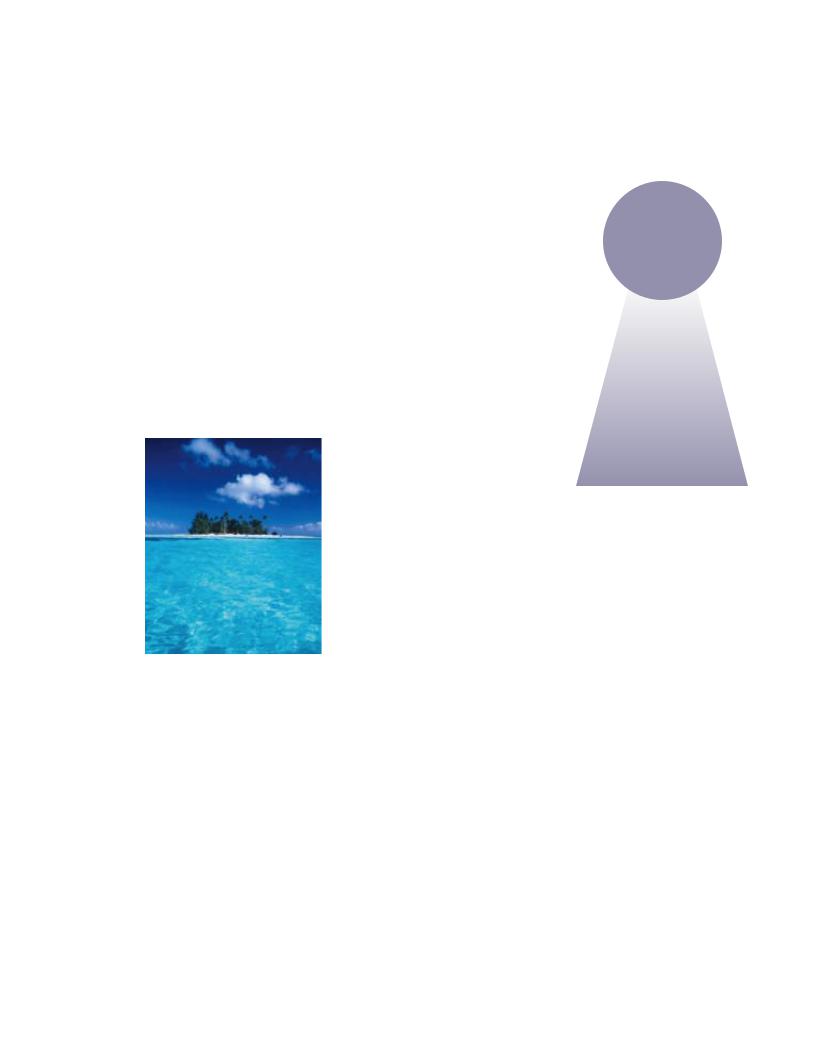
|
|
|
|
n |
a |
|
|
|
d |
|
|
|
|||
D |
|
t |
i |
|
|
|
|
l |
|
|
|
|
|
||
r |
o |
s |
|
|
|
|
|
|
|
|
|
|
|||
|
y Sp |
|
|
|
|
|
|
r |
|
|
|
|
|
|
|
|
|
|
|
|
|
|
o |
|
|
|
|
|
|
|
|
|
|
|
|
y |
W |
|
|
|
|
|
|
H |
|
||
|
|
|
r |
|
|
|
|
|
|
|
|
|
|
||
Wate |
|
|
|
|
|
|
|
|
|
C |
L |
||||
|
|
|
|
|
|
|
|
|
|
|
|
R |
|
I |
|
|
|
|
|
|
|
|
|
|
|
|
|
A |
|
|
H |
Islands are areas of land surrounded on all sides by water. |
|
E |
|
|
|
G |
|||||||||
|
|
|
|
|
|||||||||||
|
S |
|
|
|
T |
||||||||||
|
|
|
|||||||||||||
Islands come in all shapes and sizes. The very smallest are too |
|
||||||||||||||
small to hold even a house. The largest islands contain whole countries.
If you live in England, Iceland, Australia, or Japan, you live on an island. But these islands are so large that you might walk all day and never see water.
How do islands develop in the first place?
Some islands begin as fiery volcanoes in the ocean. Hot lava pours out of the volcano, making the island bigger and bigger. Slowly, as the lava cools,
it becomes solid land, and when it rises above the water, it becomes an island. These are the volcanic islands.
Other islands are actually parts of the world’s continents. Some of the land toward the edge of the continent may have been worn away over many, many years by wind or rain, or perhaps some of it sank. Then water from the ocean filled the low places and made a new island.
A row of islands may once have been the tops of mountains in a mountain range. The Aleutian Islands off the coast of North America were probably once a part of a mountain range that connected Alaska with Asia.
Maybe most surprising are the islands that are built up from the bottom of the ocean from the skeletons of tiny sea animals called “coral.” As some corals die, others live on top of them. After thousands of years a coral island rises to the ocean surface. And these islands go on living!
LEARN MORE! READ THESE ARTICLES…
GREAT BARRIER REEF • OASIS • PENINSULAS
This photo from the air shows one of the islands of the Maldives, a country made up of about 1,200 islands in the Indian Ocean.
© Lawson Wood/Corbis
44
© 2008 Encyclopædia Britannica, Inc.
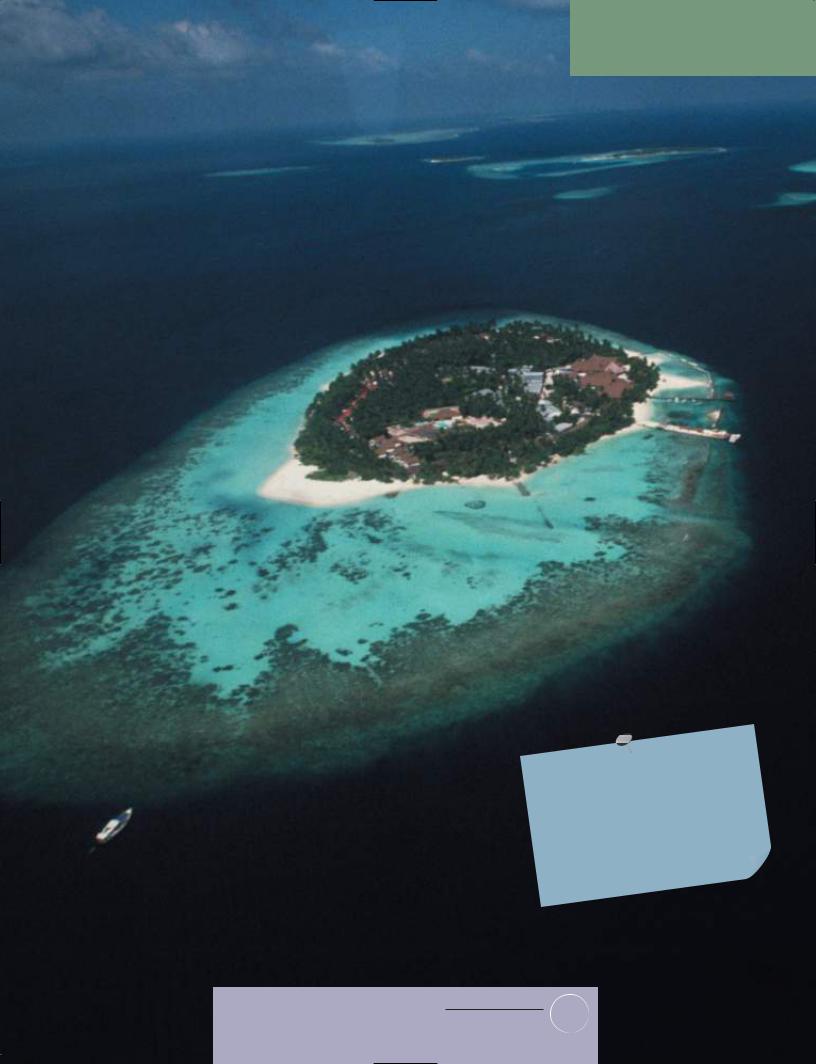
I S L A N D S
DID |
YOU |
|
KNOW? |
|
|
|
of |
||||||||||
|
|
|
the number |
||||||||||||||
try to count |
|
at a |
|||||||||||||||
If you |
|
by looking |
|||||||||||||||
|
|
in the |
world |
|
|
||||||||||||
islands |
|
come |
up with |
||||||||||||||
|
|
probably |
|
|
|
|
|
||||||||||
globe, |
you’ll |
only |
the major |
||||||||||||||
|
|
that’s |
|||||||||||||||
|
. |
But |
|
|
is |
closer |
|||||||||||
|
|
|
|
|
|
||||||||||||
|
|
|
|
|
|
|
|
|
|||||||||
300 |
or so |
|
|
|
|
|
the total |
|
|||||||||
|
|
. Altogether |
|
|
|
|
|||||||||||
islands |
|
. |
|
|
|
|
|
|
|
|
|
|
|||||
to 130,000 |
|
|
|
|
|
|
|
|
|
|
|
||||||
© 2008 Encyclopædia Britannica, Inc.
thousandsof.years creatures’]skeletonsthathavepiledontopofeachtherofor Answer:Coralislandsaremadeoftinyoceancreatures[or
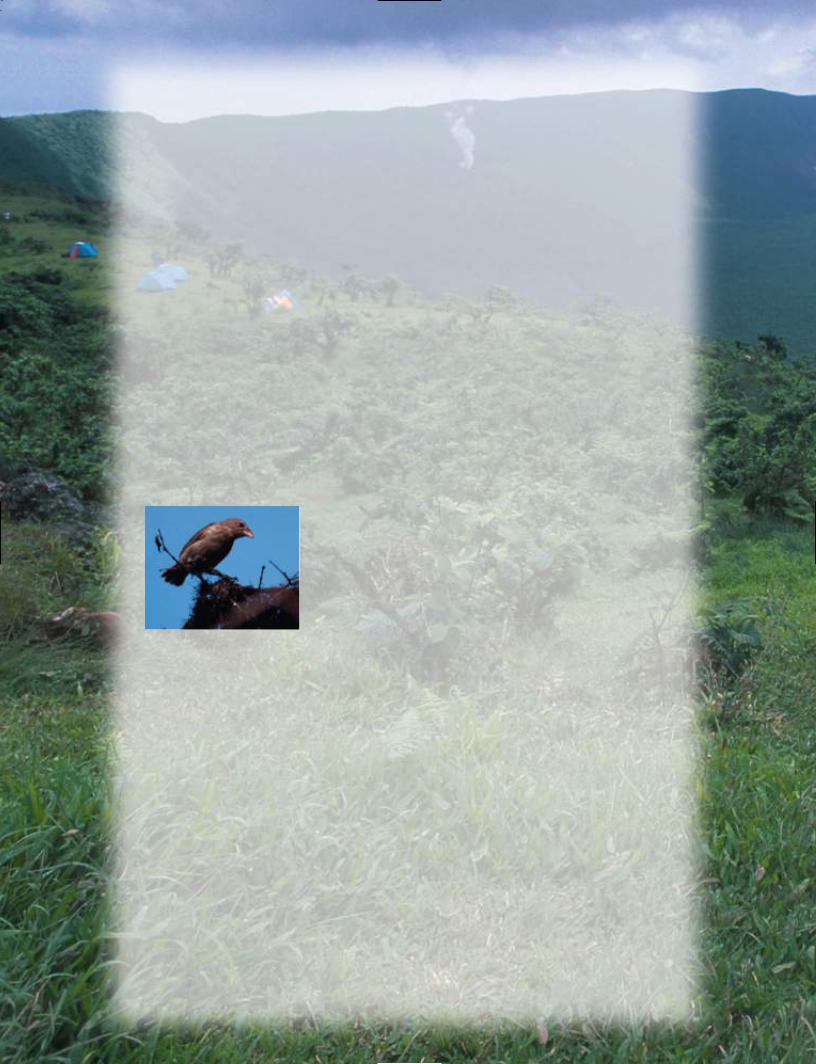
|
|
e |
I |
|
|
|
|
|
|
h |
|
|
|
|
|||
T |
|
|
s |
l |
|
|
|
|
|
|
|
|
|
a |
|
|
|
|
|
|
|
|
n |
|
|
|
|
|
|
|
|
d |
|
|
|
|
|
|
|
|
|
s |
|
|
|
|
|
|
|
|
|
a |
|
|
|
|
|
|
|
|
t |
|
|
|
|
|
|
|
|
t |
|
|
|
|
|
|
|
|
h |
|
|
|
d |
o |
|
e |
|
||
n |
|
|
|
|
||||
|
|
|
|
|
f |
|
|
|
E |
|
|
|
|
t |
h |
|
|
|
|
|
|
|
|
|
||
|
|
|
|
|
|
|
e |
|
|
|
|
|
|
|
|
W |
|
|
|
|
|
|
|
|
|
o |
Atortoise as big as a bathtub! |
|
|
rld |
|||||
|
|
|
||||||
Giant lizards that look like dragons!
These are only a few of the special things that make the Galapagos Islands different from any other place on Earth. The islands lie in the Pacific Ocean, far away from any other land. People have called them “the world’s end.” Together with other natural wonders, the Galapagos are a World Heritage site.
The Galapagos Islands were formed from volcanoes that erupted in the sea. The bare and rocky islands look as if no creature could ever live there. But thousands of animals do, including many found nowhere else in the world. One animal that lives there is the giant tortoise, or land turtle. In fact, the islands got their name from these tortoises. The word galápagos means “tortoises” in Spanish.
The Galapagos Islands were especially important to the famous English scientist Charles Darwin. When Darwin visited the islands, he discovered that there were creatures living there that did not live anywhere else in the world. He saw three-foot-long lizards—land iguanas that looked like small dragons. And he saw amazing marine iguanas, lizards that had actually learned to swim. He also found a great many birds called
“finches” that were all much the same except for differences in their beaks. These differences meant that they all ate different things, which allowed them all to share the same habitat.
Darwin decided that all plants and animals evolve, or change little by little, as the world around them changes. One plant or animal group will usually be more successful than another. Darwin called this process “natural selection.” And he called the overall change through time the “theory of evolution.”
Do you think people are evolving? What do you think we might look like in a million years?
LEARN MORE! READ THESE ARTICLES…
GEOGRAPHY • ISLANDS • PACIFIC OCEAN
The giant Galapagos tortoise can live as long as 150 years—longer than almost any other animal. Sadly, few are left today.
© Craig Lovell/Corbis
© 2008 Encyclopædia Britannica, Inc.
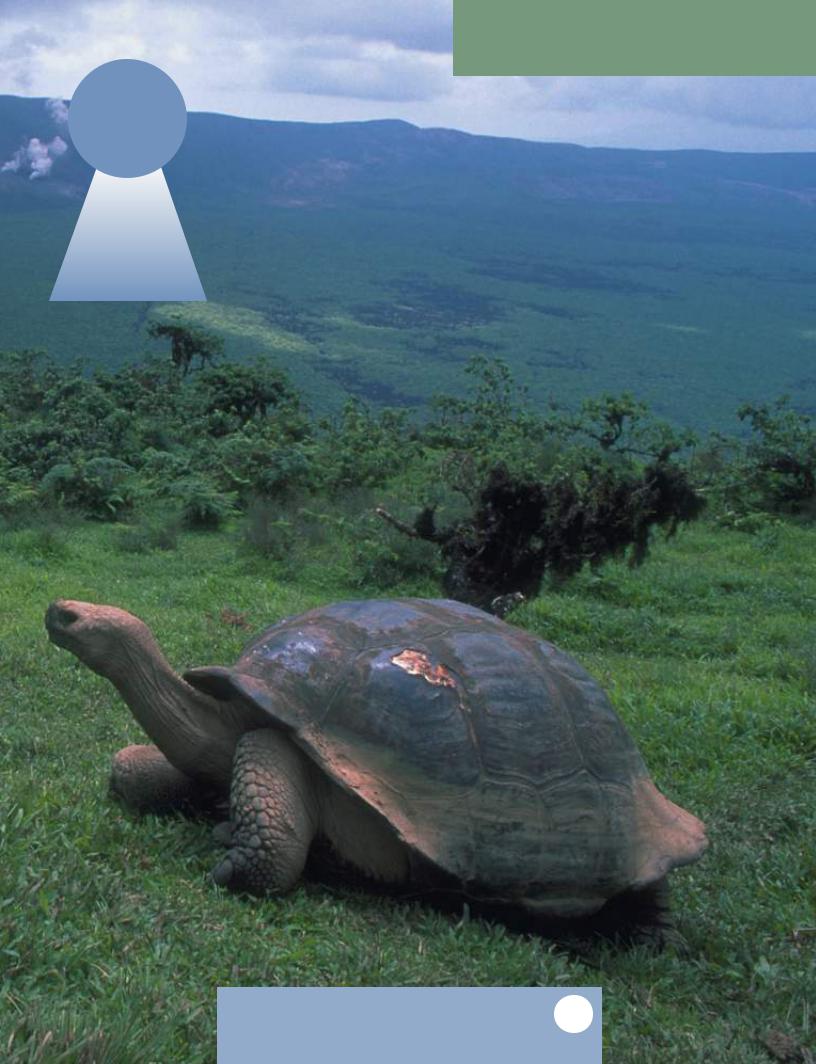
|
|
|
H |
|
|
|
C |
L |
|
|
R |
|
||
|
|
I |
||
|
A |
|
|
H |
E |
|
|
|
G |
|
||||
S |
|
|
|
T |
|
|
|
|
|
Darwin’s famous theory is called
a)natural selection.
b)good versus evil.
c)the big bang.
G A L A P A G O S I S L A N D S
DID |
YOU |
KNOW? |
|
|
|||||||||||
|
finches |
all developed |
|||||||||||||
The Galapagos |
. But |
to share |
|||||||||||||
|
|
|
|
||||||||||||
from |
the same |
ancestor |
|
|
groups |
||||||||||
|
|
different |
|||||||||||||
|
small |
area, |
|
|
|||||||||||
such a |
|
|
|
to different |
|||||||||||
|
|
suited |
|||||||||||||
|
|
beaks |
|||||||||||||
|
|
|
|
|
|
|
Darwin |
||||||||
developed |
|
|
fact helped |
||||||||||||
|
|
. This |
. |
||||||||||||
feeding |
habits |
|
|
|
|
|
|
|
|||||||
|
|
how |
species |
change |
|||||||||||
understand |
|
|
|
||||||||||||
|
|
|
|
|
|
|
|
||||||||
|
|
|
|
|
|
|
|
|
|
||||||
© 2008 Encyclopædia Britannica, Inc.
Answer:a)natural.selection
47
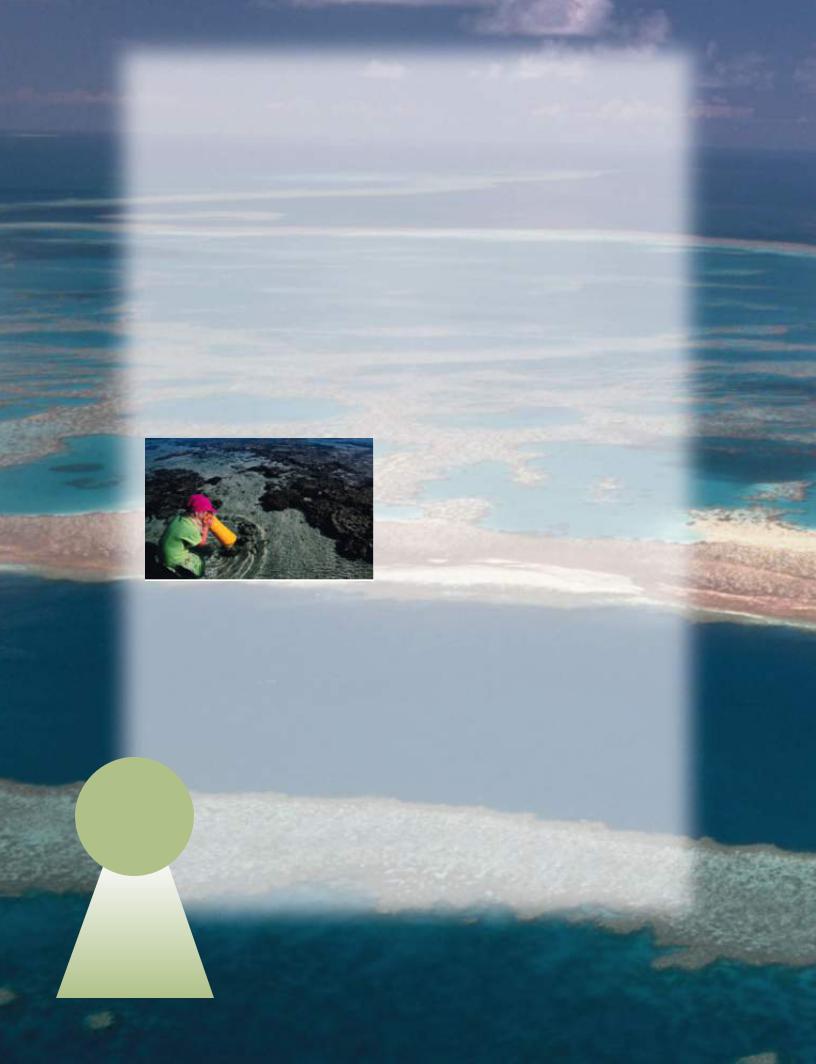
|
|
a |
d |
|
|
|
|
|
||
|
l |
n |
|
o |
|
|
|
|||
s |
|
|
|
|
|
f |
R |
|
|
|
I |
|
|
|
|
|
|
|
|
|
|
|
|
|
|
|
|
|
|
e |
|
|
|
|
|
|
|
|
|
|
|
e |
|
|
|
|
|
|
|
|
|
|
f |
|
|
|
|
i |
t |
h |
i |
s |
|
||
|
|
|
|
|
||||||
|
|
|
|
|
|
|
||||
|
|
|
|
|
|
|
|
|||
W |
|
|
|
|
n |
R |
|
|||
|
|
|
|
|
|
|||||
|
|
|
|
|
|
|
|
|
e |
|
|
|
|
|
|
|
|
|
|
|
e |
|
|
|
|
|
|
|
|
|
|
f |
|
|
|
|
|
|
|
|
|
|
s |
The Great Barrier Reef is one of the great natural wonders of the world.
It is actually a system of many individual reefs and islets (small islands). Altogether there are 2,100 individual reefs in the Great Barrier Reef. This huge ridge of coral reefs is separated from land by a channel of water 30 miles wide.
The Great Barrier Reef was formed over millions of years from mounds of coral. A coral is a soft animal that supports its body inside a hard hollow shell. When the coral died, its shell remained, and other corals grew on top of it. Over those millions of years, the corals remained
hardened and became cemented together. Slowly they were covered with underwater plants, debris from the ocean, and other corals.
The Great Barrier Reef lies in the Pacific Ocean off the coast of Queensland in northeastern Australia. From north to south its length is equal to the entire Pacific Coast of the United
States, extending more than 1,250 miles! The water is so clear and pollution-free at the Great Barrier Reef that people can glimpse the wonderful marine life deep underwater.
Besides the 400 types of coral, there are such animals as anemones, snails, lobsters, prawns, jellyfish, giant clams, and dugongs. And there are more than 1,500 species of saltwater fish. Many of the small fish have
brilliant colors and unusual shapes.
The Great Barrier Reef was named a World Heritage site in 1981.
LEARN MORE! READ THESE ARTICLES…
ISLANDS • OCEANS • PACIFIC OCEAN
From north to south, the length of Australia’s Great Barrier Reef is equal to that of the entire Pacific Coast of the United States!
© Australian Picture Library/Corbis
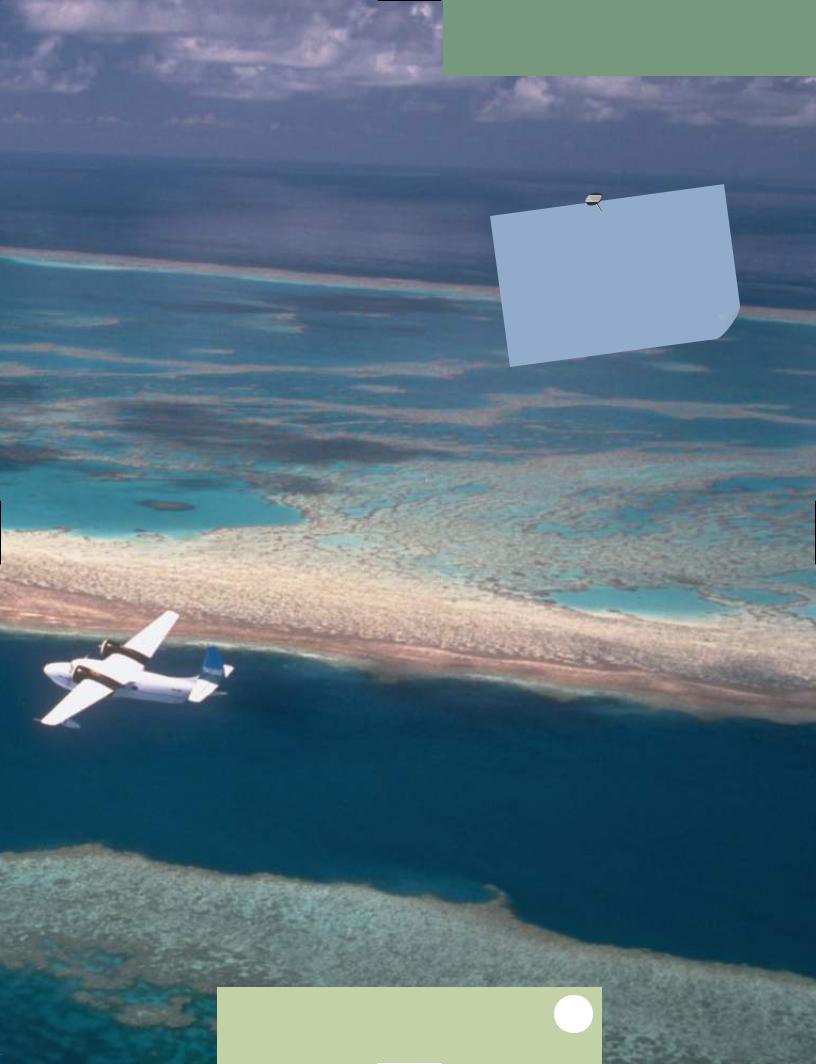
G R E A T B A R R I E R R E E F
DID |
YOU |
KNOW? |
|
|
|
|
|
||||||||||
|
|
truly |
a single |
|
|
|
|
||||||||||
|
|
it isn’t |
|
-mile |
|
||||||||||||
|
|
|
|
|
|
|
|
|
|
||||||||
Though |
|
|
|
|
|
|
|
square |
|
|
|
||||||
|
|
|
|
|
|
- |
|
|
|
|
|
|
to |
||||
structure, |
the |
135,000 |
|
|
|
referred |
|||||||||||
Reef |
is often |
|
|||||||||||||||
|
|
|
built |
by |
|||||||||||||
Great |
Barrier |
|
|
|
ever |
||||||||||||
|
largest |
structure |
|
no hand |
|||||||||||||
as the |
|
had |
|||||||||||||||
|
|
. And people |
|
|
|
||||||||||||
|
|
|
|
|
|
|
|
|
|
|
|||||||
living |
things |
|
|
|
|
|
|
|
|
|
|
|
|
||||
in it! |
|
|
|
|
|
|
|
|
|
|
|
|
|
|
|
||
© 2008 Encyclopædia Britannica, Inc.
Answer:.FALSEIt’smadeofcoralskeletonsandlive.coral
49
